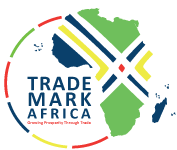The East African Community (EAC), headquartered in Arusha Tanzania, is defined as the regional intergovernmental organisation of the Republics of Burundi, Kenya, Rwanda, the United Republic of Tanzania, and the Republic of Uganda. Heads of Partner States meet at a special summit twice a year when they give “general directions and impetus as to the development and achievement of the objectives of the Community” .
However, the first item on the agenda of any EAC summit is to review past decisions by member states and monitor their implementation progress: have they been implemented, are they ongoing or has no action been taken?
The obligation to review past decisions, as the first item on the agenda of every EAC Summit, was passed at the November 2013 Summit. That responsibility has now been made easier by the introduction of the East African Monitoring System (EAMS), a computerised system that records all decisions made since 2001 up to the present day and which focuses on those decisions that still need to be implemented – presented in dashboard format.
Holding Partner States accountable
The East African Community Secretariat, with support from TradeMark Africa (TMA) and GIZ (Deutsche Gesellschaft für Internationale Zusammenarbeit – Germany’s government-supported development agency),developed EAMS capture the progress of implementation of EAC Council of Ministers decisions, by Partner States. . This fosters accountability by the Partner States on the decisions they make.
Delays in actioning decisions that have been agreed by all Partner States, such as removing non-tariff barriers, can be both frustrating and costly to individual countries, possibly hindering the progress of East African integration.EAMS therefore contributes to the integration process.
“Although we had a monitoring system before, it was manual,” said Julius Birungi, Senior Monitoring and Evaluation Officer at the EAC. “This system is new and different,” Birungi gave the example of the Uganda Revenue Authority which reports on customs interconnectivity, as directed by the Council of Ministers – a report received on his computer, allowing him to extract relevant information as it goes through the normal approval systems. “Formerly it had to go through various ministries,” he said, “and by the time you wanted an update it took forever. Today, we are able to do that because we have Focal Point Officers who concentrate on the status of decision implementation.”
Outstanding decisions are highlighted
Birungi maintains that EAMS has more impact on the implementation of decisions, and not only for recent ones. For the first time, his office has compiled all outstanding Council decisions since 2001.
“So, if someone comes to me,” he explained, “and says there was a decision made on the environment, but can’t remember it exactly, our system is able to search for all decisions related to that and then it can be narrowed down.”
Better still, the status of the decision is denoted by a colour; green for actioned, yellow for ongoing and red for no action. Using this colour coding unactioned decisions are spotted easily by those responsible for monitoring and a red status will quickly be questioned. “The idea,” said Birungi, “is to have more yellow and green highlights and as few reds as possible.”
Burundi workshop on EAMS
East African heads of state are taking their responsibilities for implementation seriously. In June 2014 the Burundian Ministry to the Office of the President responsible for East African Community Affairs, in collaboration with TradeMark Africa (TMA), held a two-day workshop to train staff to use EAMS for validating data on the status of implementation of decisions made by Burundi in the EAC context. Also at the workshop were representatives from the Ministries that were affected by the Sectorial decisions made at themost recent EAC Heads of State Summit. They thus validated data validation thatwas captured on EAMS,
In addition, according to EAC Secretariat, the East African Presidents have directed that reports be compiled on decisions that are specific to their own country so that their own offices can monitor implementation progress.
“I have no doubt that it will improve responsiveness,” he explained. “We have a system that helps people make evidence based decisions; we have a system that has helped us to move forward in terms of moving highest; we have a system that is accessible by many people, and we have a system where the Partner States can report to the Secretariat. Countries are now becoming more accountable. At the end of the day, someone is going to ask: why haven’t you done this? We couldn’t have wished for more.”
In conclusion, it can therefore be argued, credibly, that in so far as the EAMS provides the Summit with a basis and impetus for action, it has contributed significantly to the improved integration momentum. The EAMS has also contributed significantly to the improved capacity of the EAC Secretariat to coordinate and monitor the formulation and implementation of integration policy.















